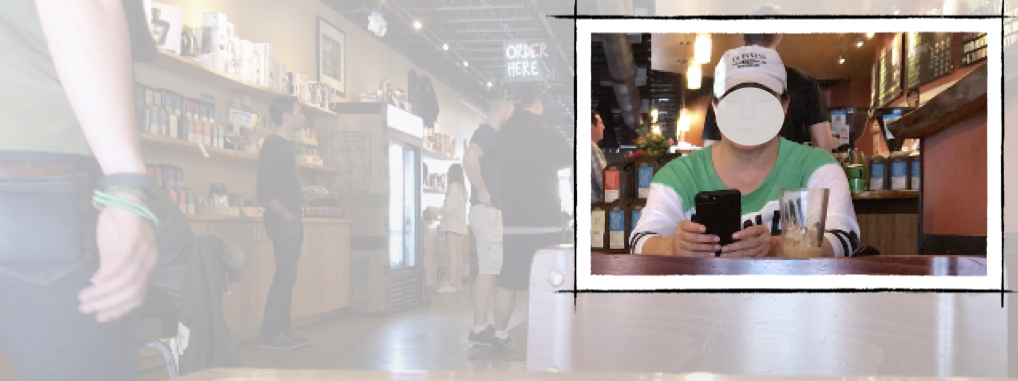In December 2013, Army Major Tyson Walsh stopped an attack on Bagram Airfield in Afghanistan by identifying a person who stood out from the baseline. The story, which Walsh discusses in a podcast from the Modern War Institute at West Point, was the topic of an article we wrote at The CP Journal because of how clearly the narrative demonstrates the importance of having and being able to use a decision tree that a protector is able to implement quickly and confidently. You can find that article here.
For members of the military, police officers, and the security professionals who are expected to protect others (even if that means exposing themselves to a greater degree of harm than they’d be exposed to if they were only responsible for themselves) there is a big difference in the risk you are exposed to during the time when you are making a decision and during the time when you are actually implementing a decision. This is readily apparent in Major Walsh’s podcast, as he describes that, while he was engaged in hand-to-hand combat with the terrorist, he was approached by the terrorist’s bodyguard who struck him in the head with a lead pipe. While the Major was unconscious, the bodyguard removed most of the evidence, collected the terrorist’s body, and attempted to make an escape. By talking about this increased exposure that protectors have while taking action, we can begin to craft strategies and tactics to mitigate those risks and protect ourselves from unnecessary harm.
In order to understand the five ways to mitigate the risks that a protector faces while engaging an adversary, referred to as being in Condition Red, I first want to make sure that we have clearly defined what that risk is.
A Quick Review of Cooper’s Color Code
Being in “Condition Red” is an assessment about a person that reflects their current level of situational awareness. The conditions of awareness were originally developed by Jeff Cooper, a retired Marine Colonel, and expanded on by Army Lieutenant Colonel Dave Grossman. The version of Cooper’s Color Code that has been adopted and used by the Marine Corps in their entry-level and continuing education training programs identifies five different states of awareness that a person could be in at any given moment in time. They are:
- Condition White: This state of awareness describes a person who has no situational awareness whatsoever.
- Condition Yellow: This is the way to describe a person who is in a “relaxed level of alertness.” This means that a person is actively searching their surroundings for anything that stands out from their baseline, but hasn’t found anything that attracts their attention just yet.
- Condition Orange: This is a person who has entered into a “specified level of alertness,” meaning that they have identified a person or object that doesn’t fit the baseline and have entered into their planning time in which they are deciding what they will do about it.
- Condition Red: The person has completed their planning time and are implementing their decision. This is the state of awareness a person has when they are focused on executing their plan.
- Condition Black: Like in Condition White, this is a state of awareness used to describe a person who has no situational awareness. What distinguishes Condition Black from Condition White is the reason for the lack of awareness. In Condition Black, it is due to the person being overwhelmed by the events and overcome by the stress of taking the action they executed in Condition Red.
A lot of what we focus on and talk about at The CP Journal relates to the behaviors and processes that allow an alert observer to transition from Condition Yellow (where they are looking for threats) to Condition Orange (our left of bang planning time once we have identified a potential threat).
The reason why we primarily focus on these two conditions (in the Tactical Analysis Course, Left of Bang: How The Marine Corps’ Combat Hunter Program Can Save You’re Life, and blog posts here and here) is because, if a protector is unable to recognize a threat before a weapon is seen, they never enter Condition Orange. Instead, they transition from Condition Yellow (looking for threats) directly into Condition Red (reacting to the threat), without ever having transitioned through Condition Orange (planning time) because they didn’t have any advance warning. Quite simply, Condition Orange is the state a person should strive for so that they can appropriately plan for how they will react to the anomaly they’ve identified. Without Condition Orange, there is no plan and there is no “getting left of bang.”
What is the Risk of Condition Red?
Once a protector has made the decision about how you will respond to the anomaly and begin to take action with the anomaly, the risk level that a protector is exposed to has just gone up. This is because you often have to close the distance with the potentially violent person, especially when the decision is to either talk to them or detain them. When you close the distance, you put yourself in harms way because close proximity negates skill. Because you are at greater risk, you begin to naturally dedicate more of your mental attention to the person who could hurt you, which degrades your awareness of your surroundings. This is how someone in such a situation can find themselves in Condition Red, which is a dangerous place to be.
Think about a boxer. As a round in the fight begins, they have put themselves inside of the ring and are moving to be within one arm’s distance with a person who is trying to knock them out. What awareness does that boxer have of the people in the stands? Hopefully it is zero. If they are putting themselves close to someone who is looking for an opening to throw a punch, they shouldn’t be distracted by something on the periphery because they have to notice the subtle signs that show their opponent is getting ready to throw a punch so they can protect themselves.
Real life, however, isn’t as clean and as governed by rules like a sanctioned boxing match is. Whereas the boxer doesn’t have to worry about their opponent’s trainer entering the ring and throwing a sucker punch, our country’s protectors do have to worry about periphery factors. The risk of ambush and being out-numbered in an altercation is a serious threat for members of the military that needs to be considered.
While the risk of being in Condition Red can’t always be addressed, every time a protector enters into Condition Red and reduces their situational awareness of the bigger picture in order to engage a potentially violent person, they should be taking the steps necessary to minimize the risk they are exposed to for that period of time. As Major Walsh’s story highlights, the longer you spend in Condition Red, the greater the hazards that you’re exposed to.
Five Ways To Mitigate the Risks of Being In Condition Red
1. Give yourself more time in Condition Orange by recognizing the threat earlier.
By learning to read behavior, you can increase your chances of identifying the anomaly and threat sooner than you would if you don’t have that ability. If you can create additional time to plan what you’re going to do because through earlier anomaly recognition, you can better ensure that the actions you will take can be decisive, effective, and something you can do efficiently, thus minimizing the amount of time needed in Condition Red. The longer you have to be able to be in Condition Orange to make your plan, the better. The shorter the time you’re in Condition Red, the better. So building additional muscle memory around the process to establish baselines, building templates for baselines of areas that you visit regularly, and building files folders to help you hunt for anomalies, is crucial.
2. Rehearse your decision tree and simulate scenarios that would guide you down each branch.
By being able to make a decision quickly, you can spend less time in Condition Orange, and be able to implement your plan more rapidly. This helps give you the element of surprise or allow you to engage more quickly into situations in which you simply don’t have a lot of time available in Condition Orange. With the element of surprise, you can begin to impact your adversary’s OODA Loop (link). If you are noncommittal or hesitant to make a decision, you risk the adversary realizing that you have identified them and changing their behavior or turning the tables on you. These delays and hesitations could extend the time in Condition Red instead of shortening it by rehearsing your decisions.
3. Hone your craft in the actions you take in each decision. Master those processes.
Like Major Walsh, who was comfortable in his ability to engage the terrorist in hand-to-hand combat, think about your ability to do the same. If you’re a police officer, being able to execute your handcuffing techniques or employing your non-lethal weapons should be second nature so that you are able to turn to those options confidently when you need them.
If your decision is to “contact” the anomaly, have you built comfort in initiating conversations, influencing people, and de-escalating the tension of stressful siltations? Having processes for all of these options and then drilling those processes until they are second nature can be the difference in your ability to get done what you need to quickly enough to turn your attention back to the larger area.
4. Hone your file folders for assessing people as they approach you.
When your focus is on the person you are engaging, you may only be provided a fraction of a second to divert your attention to your surroundings. This means that time spent expanding your file folders for people approaching you, which decreases the amount of time required to assess their intentions, will be very beneficial. Being able to assess whether a person has a hostile intent with fewer pieces of information required to reach that realization will reduce the length of time you’d have to divert your attention from the person you are engaging with to update the assessment of your safety.
5. When you are working with a partner, battle buddy, or colleague, rehearse the roles and responsibilities of the person working in the overwatch or cover position.
People are naturally attracted to action. If you are the person interacting with a potentially violent person, that could be seen as exciting to the person who should be watching your back. If they are watching you engage the person, they aren’t watching all of the people around you and haven’t actually provided you with a greater degree of of safety. By rehearsing the expectations of each person in the partnership and discussing the contingencies that may arise, you can ensure that the “cover” person is effectively looking at the bigger picture. This can remove the concern from the person interacting with the anomaly that there could be threats approaching, ensuring they remain focused on their role.
Conclusion
As Major Walsh’s story shows, taking action to prevent an attack to protect a large number of people can expose a protector to a greater degree of harm as an individual. While it may be an expectation of many of our nation’s warriors, police officers, and security professionals to take that risk, it doesn’t mean that they need to accept it blindly. By recognizing that this threat can increase when we are in close proximity to a potential threat and have lost a great deal of our situational awareness of our surroundings, we can actively develop the skills necessary to reduce that operational risk to an acceptable, more safe level.


